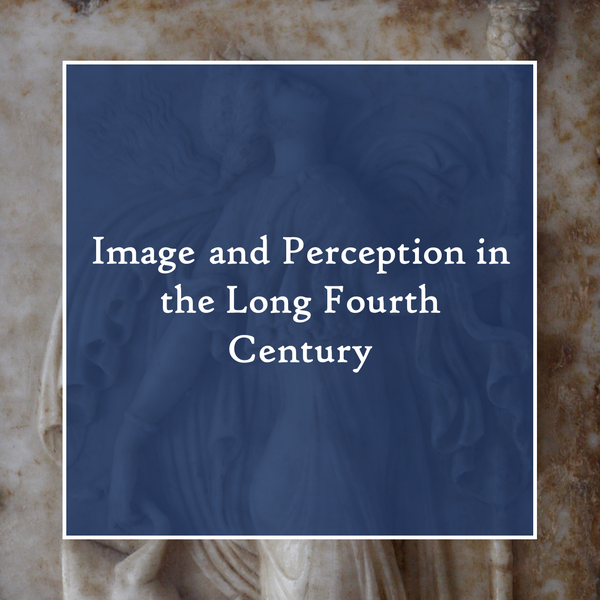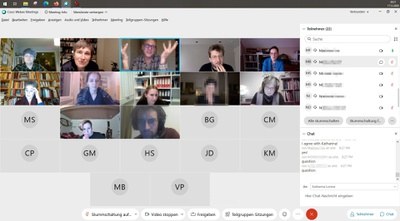Image and Perception in the Long Fourth Century
 |
On 17 December 2020, the virtual workshop "Image and Perception in the Long Fourth Century" took place, organised by Katharina Lorenz and Claudia Schmieder (Classical Archaeology at JLU) with the support of Section 5 Media and Art of the Centre for Media and Interactivity and the assistance of Hilke Wagner and Tamara Ziemer. In five lightning talks, 10-minute presentations by individual researchers, thirty scholars from Germany, France, Great Britain, Italy, Luxembourg and the USA (Fig. 1) exchanged views on phenomena of vision and visibility in the material remains and literature of the "long" 4th century BC, and how such an examination allows conclusions to be drawn about practices of ancient perception in a time horizon marked by significant visual changes.The first two contributions were devoted to the role of transitions in transmedial communication situations as an entry point for understanding the affordances acting on the recipients. In Light, Matter, and Medium in Posidippus' Poems on Stones, Verity Platt (Professor of Greek and Roman Art History, Cornell University) used an epigram by Poseidippus about a gem (Lithika AB 13, 3rd century B.C.) to demonstrate how ancient ideas about the functioning of individual sensory perceptions can be extracted from this literary description of the materiality and effect of a stone, which partitions its experience into sometimes contradictory individual moments. In Enactive Imagining and Enargeia in Hellenistic Poetry, Ivana Petrovic (Professor of Classics, University of Virginia) investigated Idyll 15 by Theocritus, a poet of the 3rd century B.C., and the role of motosensory stimuli in the form of the detailed description of materialities and the sequence of activities associated with them, which intensify the imagination on the part of the recipient. In his contribution Sight, Scene, and Unseen in Classical Painting, Nathaniel Jones (Associate Professor of Art History and Archaeology, Washington University St. Louis) continued questions of indexical communication in the context of material images and, using the example of a white-ground funerary lekythos by the Achilles painter (c. 440 B.C.), explored the visual tricks of viewer guidance in the representation of a discourse on making the invisible visible in the context of death.
|
|
|---|---|---|
|
Strategies of viewer guidance were also the focus of the two concluding contributions. In Visual Strategies in Late Classical Greek Sculpture and Theatre Architecture: The Interplay of Frontality and Multiperspectivity, and the Hierarchized Space, Nikolaus Dietrich (Professor of Classical Archaeology, University of Heidelberg) used the example of Hellenistic Priene to examine how the preferential elaboration of individual views in both sculpture and theatre architecture led to a new hierarchisation of the surrounding space, on which they had an aesthetic effect. In Landscape as Leitmotif - Landscape as Spatial Module: Enliving, Perceiving and Conceiving Hellenistic Sanctuaries, Asja Müller (Research Assistant for Classical Archaeology, FU Berlin) pursued the idea of space as an aggregate of different experiential situations, specifically using the example of the path of the foreign envoys through the Hellenistic sanctuary of Asclepius at Kos in the context of a religious festival (Fig. 2), in order to gain new parameters for the characterisation of the interplay between built and natural space, as they were concretised in the experience of the ancient users, especially at their transitions.The lively exchange across the different fields of ancient studies and national research cultures and across the different media and ultimately a good three centuries of observation revealed common strands with regard to sensory-motor mediation and the transitions in transmedial experiential situations, which will be further examined in the future for their significance for an examination of the practices of ancient perception in the "long" 4th century BC.
|
||
 |
 |
|
|
Fig. 1 The virtual workshop during a discussion round. |
Fig. 2 View of the Asklepieion of Kos by Paul Schazmann. University library of JLU Giessen. | |
 |
|
|
